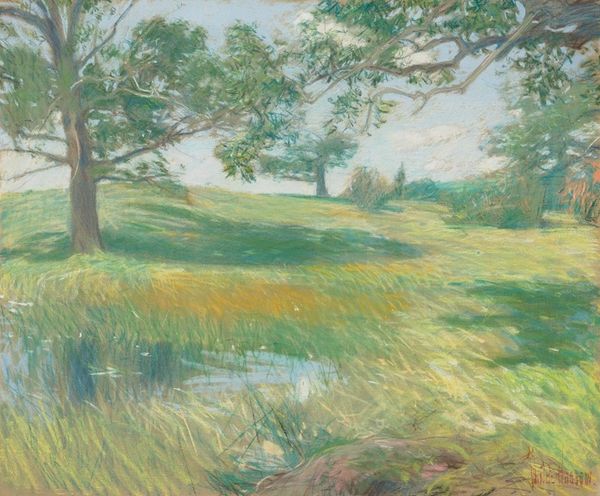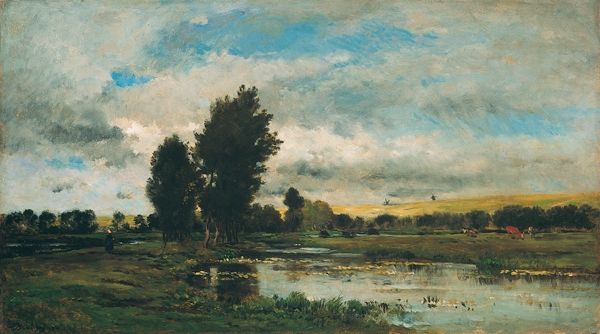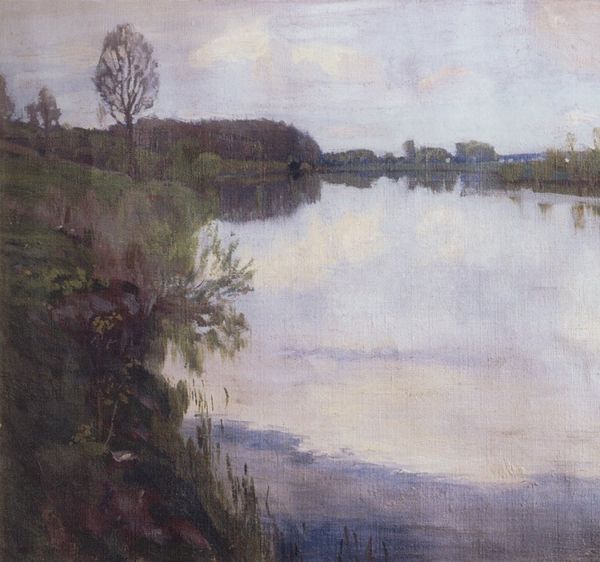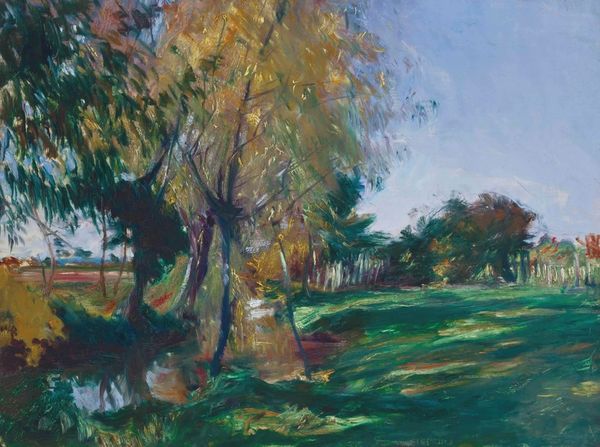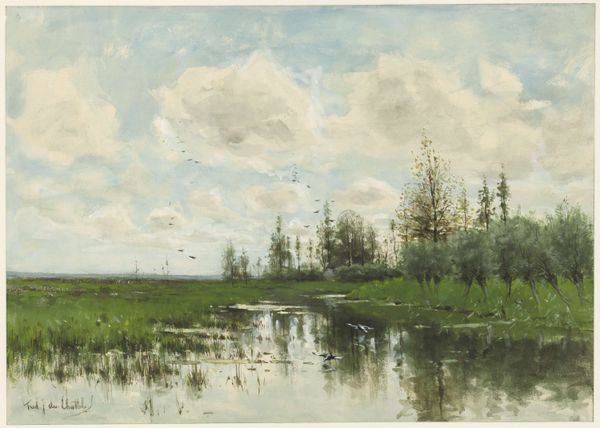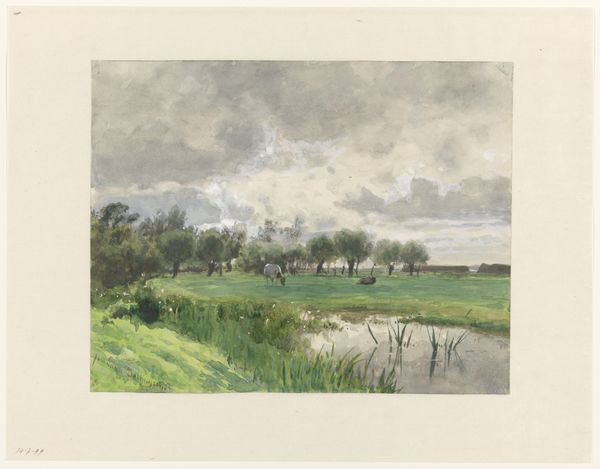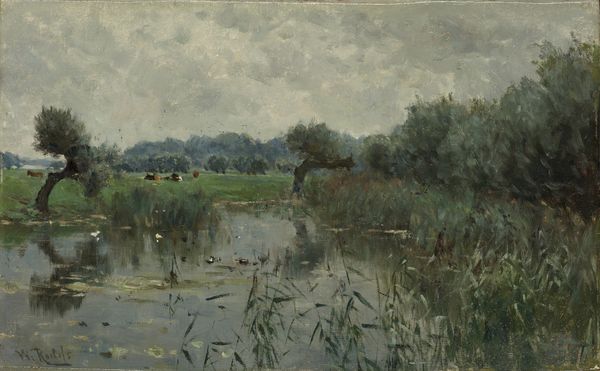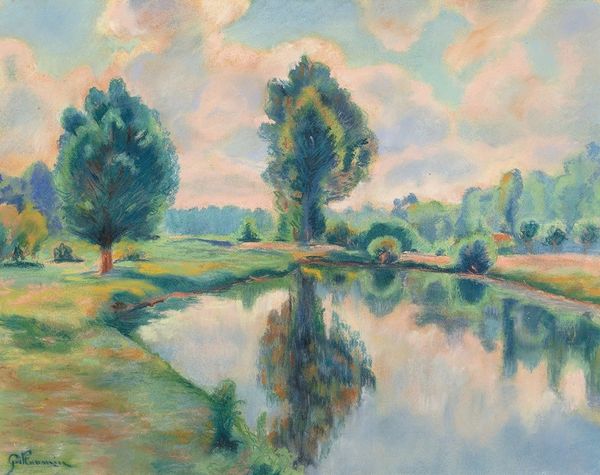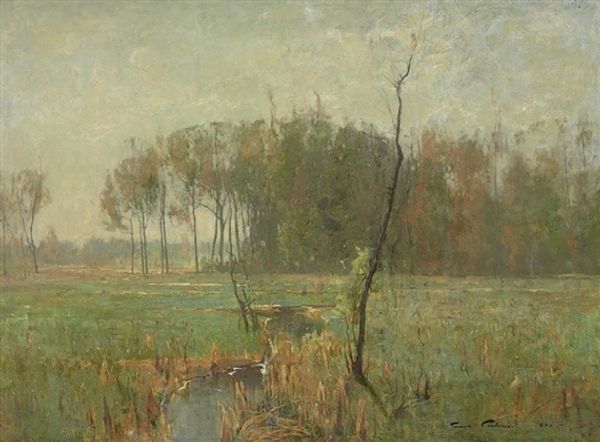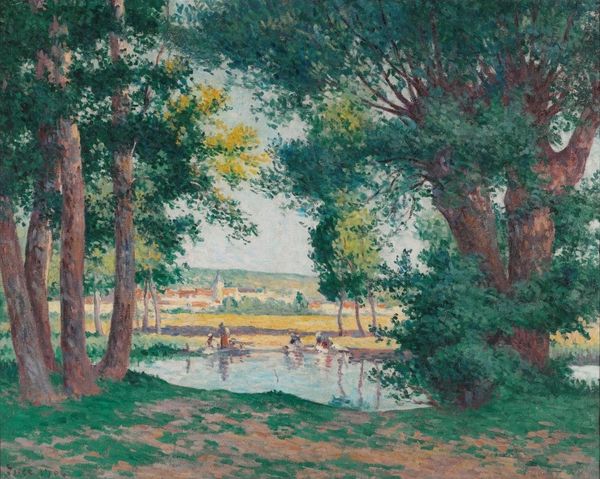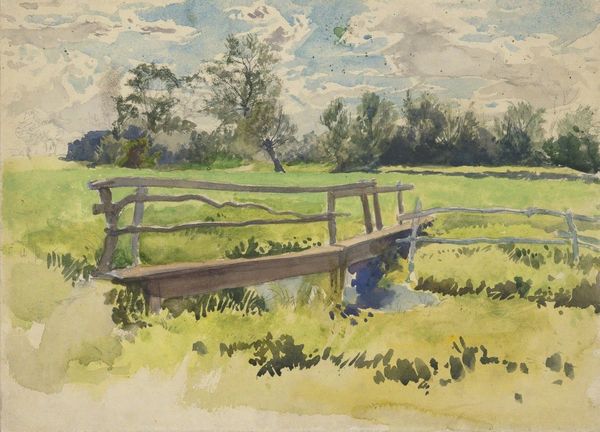
painting, plein-air, oil-paint
#
tree
#
painting
#
impressionism
#
plein-air
#
oil-paint
#
landscape
#
oil painting
#
post-impressionism
Dimensions: 47 x 32 cm
Copyright: Public domain
Editor: Ferdinand Hodler's "The Chestnut Trees," painted in 1889, offers a really serene scene. The soft colors and the reflection in the water create such a peaceful atmosphere. What catches your eye when you look at it? Curator: It's fascinating how Hodler uses the motif of reflection, isn’t it? Throughout art history, reflections often symbolize the unconscious, or an alternate, perhaps truer, reality. Notice how the reflected trees are almost abstract, more intensely colored than the trees themselves. Do you think this was accidental? Editor: Not accidental at all. Maybe he’s trying to show that what we perceive isn’t necessarily the full picture? That there's more beneath the surface? Curator: Precisely. The chestnut tree itself is significant. In many cultures, it represents honesty and justice. Hodler's emphasis on the tree, coupled with its distorted reflection, could suggest a meditation on truth versus perception, or the ideal versus the real. Notice the overall muted palette, punctuated by this vibrant reflection... what emotional tone does that choice create for you? Editor: I feel a sense of quiet contemplation, but maybe with a touch of underlying tension, or questioning? Curator: A perfect description! It's this interplay between tranquility and underlying disquiet that makes Hodler's landscapes so compelling. He captures a surface calm, but hints at deeper, more complex psychological and cultural currents moving beneath. What a great way to sum it up. Thanks for sharing your thoughts. Editor: Thank you. I definitely see the symbolism and emotional layers much more clearly now!
Comments
No comments
Be the first to comment and join the conversation on the ultimate creative platform.
